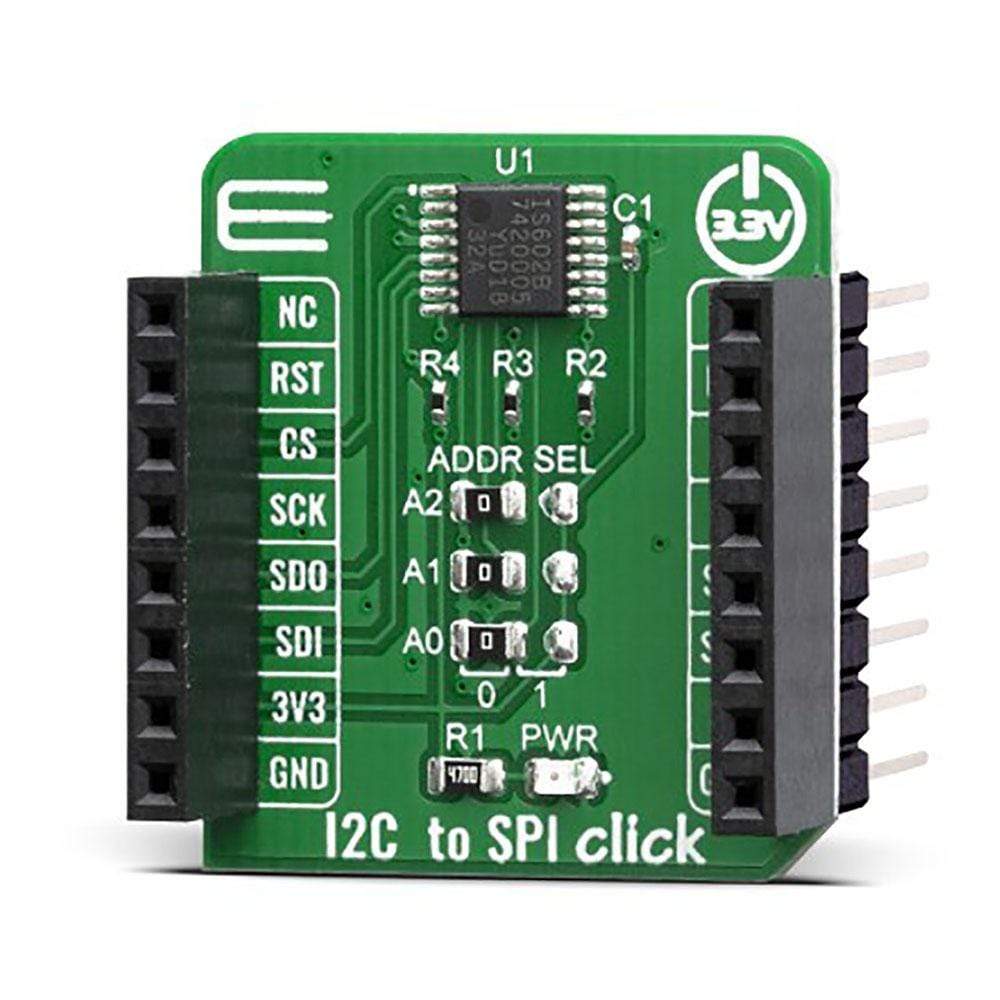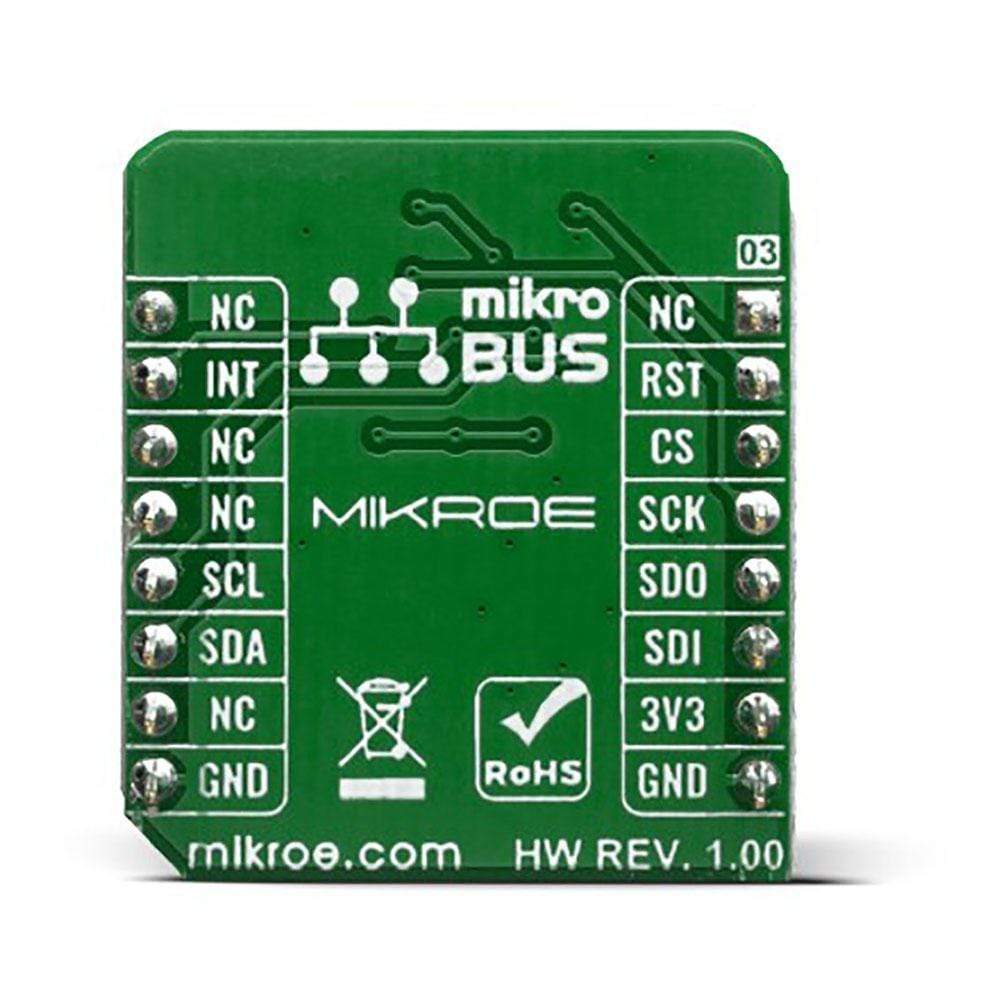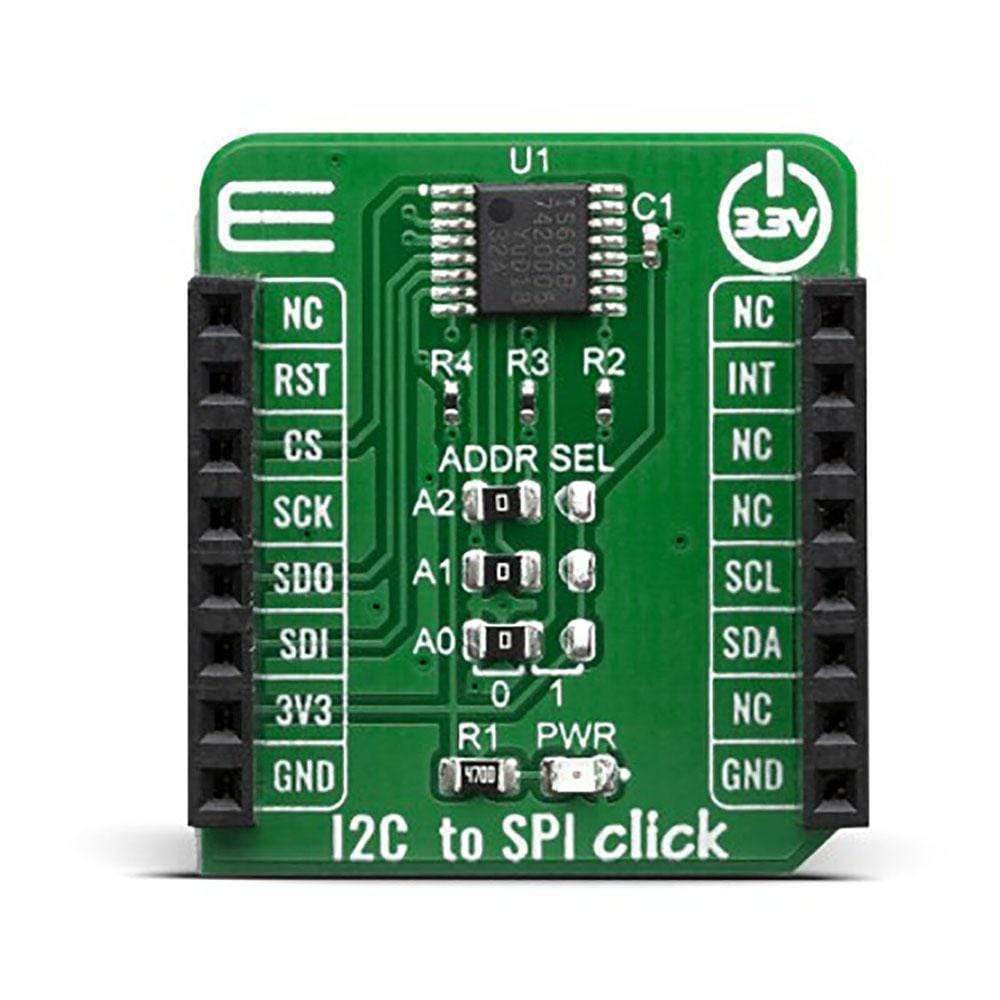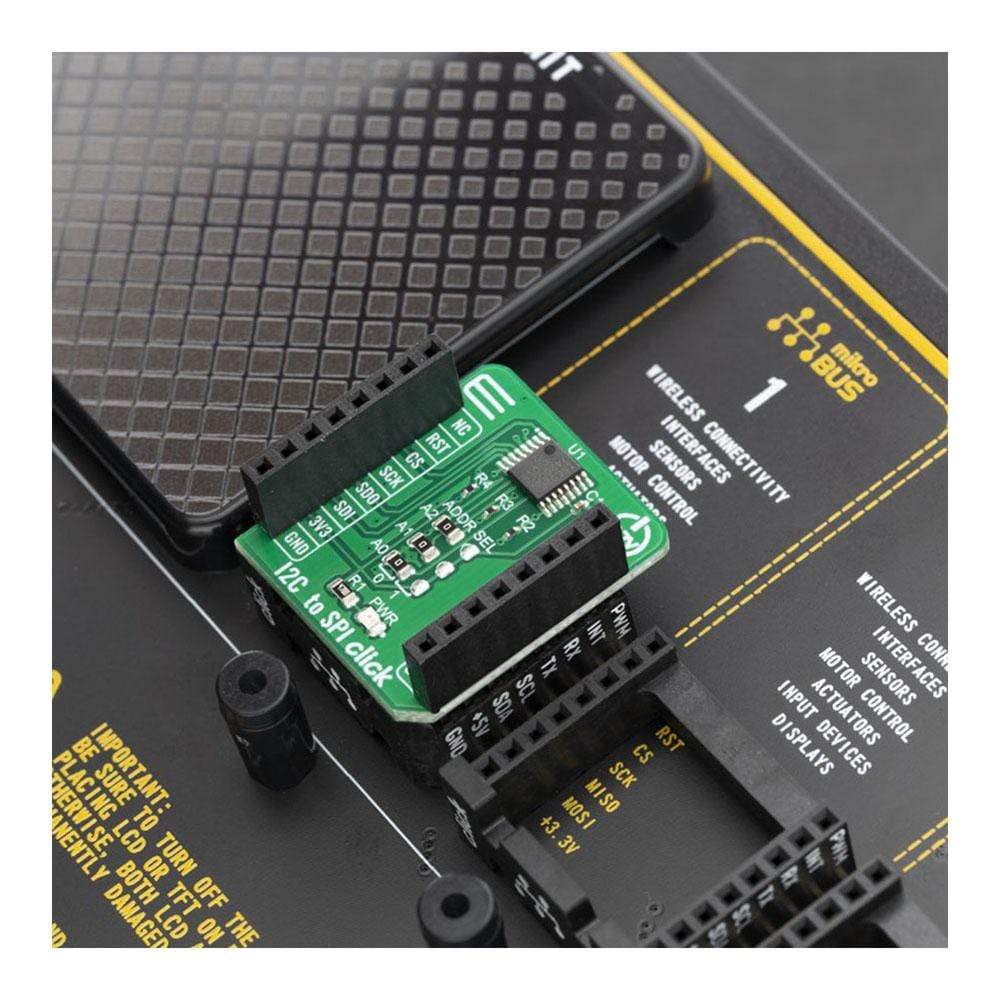



Overview
The I2C to SPI Click Board™ is an all-in-one solution that allows serving as an interface between a standard I2C-bus of a microcontroller and an SPI bus, which allows the microcontroller to communicate directly with SPI devices through its I2C-bus. It is equipped with stacking headers, so it can be easily connected. By offering an I2C-bus slave-transmitter or slave-receiver and an SPI master, this Click Board™ controls all the SPI bus-specific sequences, protocol, and timing. It also has its own internal oscillator, and it supports the SPI chip select output that may be configured as GPIO when not used.
The I2C to SPI Click Board™ is supported by a mikroSDK compliant library, which includes functions that simplify software development. This Click Board™ comes as a fully tested product, ready to be used on a system equipped with the mikroBUS™ socket.
Downloads
Le Click Board™ I2C to SPI est une solution tout-en-un qui permet de servir d'interface entre un bus I2C standard d'un microcontrôleur et un bus SPI, ce qui permet au microcontrôleur de communiquer directement avec les périphériques SPI via son bus I2C. Il est équipé d'en-têtes d'empilage, ce qui permet de le connecter facilement. En offrant un émetteur-récepteur esclave de bus I2C et un maître SPI, ce Click Board™ contrôle toutes les séquences, le protocole et la synchronisation spécifiques au bus SPI. Il dispose également de son propre oscillateur interne et prend en charge la sortie de sélection de puce SPI qui peut être configurée comme GPIO lorsqu'elle n'est pas utilisée.
La carte Click Board™ I2C vers SPI est prise en charge par une bibliothèque compatible mikroSDK, qui comprend des fonctions qui simplifient le développement logiciel. Cette carte Click Board™ est un produit entièrement testé, prêt à être utilisé sur un système équipé du socket mikroBUS™.
| General Information | |
|---|---|
Part Number (SKU) |
MIKROE-3743
|
Manufacturer |
|
| Physical and Mechanical | |
Weight |
0.018 kg
|
| Other | |
Country of Origin |
|
HS Code Customs Tariff code
|
|
EAN |
8606018716913
|
Warranty |
|
Frequently Asked Questions
Have a Question?
Be the first to ask a question about this.




